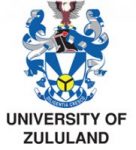
Department of Botany Programmes
| Title | Introduction to Plant Cytology, Genetics and Physiology | ||
|---|---|---|---|
| Code | SBOT111 | Department | Botany |
| Aim | The learner will study plant metabolism, heredity and cytology. This will include understanding theoretical knowledge and developing the skills to solve genetics problems through microscopic techniques. | ||
| Content | Aspects to be studied will include: the chemistry of plants, essential elements, carbohydrates, lipids, proteins, nucleic acids, the plant cell structure and function, plant cell division, chemical energy and chemical reactions, enzymes and energy carriers in plants, the movement of water and solutes in plants, photosynthesis, transpiration, respiration and the conditions affecting it, Mendelian genetics | ||
| Title | Plant Morphology, Taxonomy and an Introduction to Mycology | ||
|---|---|---|---|
| Code | SBOT112 | Department | Botany |
| Aim | The learner will study external structure of angiosperms, reproductive system, characteristics and economic importance of fungi. This will include understanding theoretical knowledge and developing the skills to solve mycology problems through microscopic techniques. | ||
| Content | Aspects to be studied will include: types of root systems, origin of roots and root modification, different forms of stems, external structure of monocotyledon and dicotyledon leaf, leaf modifications and inflorescences, floral morphology, floral diagrams and floral formulae, pollination, seed and fruit formation, classification, characteristics, reproduction and economic importance of fungi and lichens, life cycles of fungi and their role in the environment, effects of fungi on plants and on human health,microscopic structure of fungi and lichens. | ||
| Title | Plant Growth and Development and Floral Propagation | ||
|---|---|---|---|
| Code | SBOT211 | Department | Botany |
| Aim | This course is designed to develop an understanding of the role played by plant hormones on growth and development including plant responses to various stimuli. To understand the principles and factors involved in floral propagation. | ||
| Content | Aspects to be studied will include: phytochrome, stomatal movements,photophysiology, abscisic acid, auxins, gibberellins, cytokinins, kinetin and ethylene on plant growth and development. Phototropic responses and general aspects of seed and vegetative propagation. It includes techniques to study the effects of the above mentioned hormones on plant growth and development, and also phototropic responses on plants. To develop skills regarding the effect of external factors on the propagation of flowering plants and to identify and break dormancy in seeds. | ||
| Title | Plant Anatomy, Taxonomy and Biodiversity | ||
|---|---|---|---|
| Code | SBOT212 | Department | Botany |
| Aim | The purpose of this course is to acquire knowledge of the internal structure of roots, stems and leaves of monocot and dicot plants. To use keys to identify selected plant families and to gain knowledge of the diversity of plant communities. | ||
| Content | Simple and complex plant tissues: structure and function of xylem, phloem, secretary cells and tissues, epidermis. Primary and secondary body of the plant. Anomalous secondary growth. Microscopic techniques for identification of monocot and dicot roots, stems and leaves. To study the diversity of plant communities: Global, national and local factors that affect plant biodiversity. Identification of Pteridophyta, Gymnospermae and Angiospermae. Herbarium usage, diagnostic characteristics of important plant families. | ||
| Title | Cytology, Genetics and Plant Biochemistry | ||
|---|---|---|---|
| Code | SBOT311 | Department | Botany |
| Aim | This course is designed to develop an understanding about the mechanism of inheritance, phenolics, isoprenoids, nitrogen metabolism, biochemical plant pathology, biochemical plant ecology and plant cell biotechnology. | ||
| Content | Cytological and molecular structures of importance to genetics and the genetic code. Mendelian genetics. Multiple alleles probability. Sex determination and sex-linked inheritance. Linkage, crossing-over and chromosome mapping. Genetic fine structure. Pleiotrophy, polyploidy. Various cytological staining procedures and solving genetic problems. Structures, functions and metabolic pathways of major classes of phenolics in plants, isoprenoid metabolism, special nitrogen metabolism, and biochemical plant pathology and biochemical plant ecology.Different techniques involved in chromatography. | ||
| Title | Aquatic Botany and Lower Plant Taxonomy | ||
|---|---|---|---|
| Code | SBOT321 | Department | Botany |
| Aim | This course is designed to enhance the knowledge of the learners on the ecology, physiology and taxonomy of aquatic and lower plants in relation to their environment. | ||
| Content | Types of water bodies: lakes, rivers and marine.Lake formation, typology and class. Environmental factors. Major nutrients. Phytoplankton communities, periphyton and macrophyton production and limiting factors. Pollution indicators. Plant zonation.Detritus.Limnology of shallow and deep lakes. Sampling and preparation of phytoplankton for laboratory analysis. Measurement of environmental factors and nutrients. Structure, life cycles, ecology and taxonomy of Algae, Bryophyta and Pteridopyta. | ||
| Title | People and Plants | ||
|---|---|---|---|
| Code | SBOT312 | Department | Botany |
| Aim | To examine the intimate linkage between people and the plant kingdom by studying various aspects of plant-uses, including plants used for medicinal and cultural purposes. | ||
| Content | Concepts related to ethnobotany and ethnobotany data; methods to record and process this information. Ethnobotanical research and community development. History, characteristics and economic uses of ethnobotanical important plants. Importance of medicinal plants; cultural aspects of healing; plant parts used for healing. Methods of collecting and storage for marketing and for phytochemical analysis; dosage forms, methods of preparation and administration; active ingredients. The ethics of searching for new plant products; medicinally important plants species in KwaZulu-Natal. | ||
| Title | Plant Conservation and Management and Terrestrial Ecology | ||
|---|---|---|---|
| Code | SBOT322 | Department | Botany |
| Aim | This course is designed to develop an understanding of the principles of environmental management and its role in nature conservation and to study the plants in their environment. | ||
| Content | A sustainable relationship with plants. Environmental management. Resource economics, renewable and non-renewable resources. Environmental deterioration; ethics of environmental conservation. Legislation on nature conservation. Biodiversity: mountains, protected areas, coastal and marine. Rehabilitating plant communities. Plant ecology; the ecological unit; the environmental complex. Population structure and plant demography. Resource allocation. Species interactions. Classification and ordination of communities. Plant succession. Productivity; mineral cycles; environmental factors. Plant adaptations. Methods of sampling. Methods of documenting succession, measuring productivity and radiation. Physical properties of soil monitoring environmental factors. | ||


